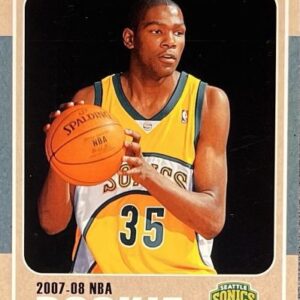In the world of trading cards, certain items transcend time, evoking potent memories while doubling as wise investments. The 2001 Upper Deck Tiger Woods rookie card is one such gem that continually draws in collectors, luring them back into the fold with an irresistible mix of history and allure. As the quintessential emblem of Tiger Woods at the peak of his powers, this card beckons like a beacon to those who hold it or seek to acquire it, offering a time capsule into a period when golf was prominently placed on every sports page thanks to Tiger’s dominance.
When examining this card, it’s impossible not to appreciate its inherent simplicity and immediate readability. Even for those who might not have touched a golf card in years, the card manages to speak volumes. One glance at this card is all that’s needed to explain what a bona fide rookie Woods card looks like, leaving little room for unnecessary elaboration.
In the pantheon of golf cards, the Tiger Woods rookie is often considered the definition of a blue-chip asset. Its availability strikes a delicate balance—sufficiently plentiful to be attainable, yet in demand enough to ensure that pristine copies are quickly snapped up. This demand is a testament to the card’s history and design, which feels like a delightful dive into the past rather than an outmoded relic. This summer, the PSA 10 grades have remained particularly stable, with sales logs portraying a consistent demand with prices hovering between the low $200s and the mid $300s.
Statisticians and data enthusiasts may prefer to pore over charts rather than anecdotal evidence, and they’ll find that the figures closely align with verbal accounts. Card Ladder, for instance, observes a sale at the end of August settling comfortably in the mid $200s. This falls in line with recent eBay figures, which reveal a range from approximately $220 to $325. Such a spread allows for predictability, while leaving enough room for factors like presentation and timing to still influence outcomes. Thus, a collector can budget with confidence and savor the patience of potential rewards.
This card’s enduring appeal is partly rooted in its straightforward place within Tiger Woods’s cardboard narrative. It needs no qualifiers, is not an uncommon parallel or obscure promotional piece; rather, it stands as the flagship base rookie card from a series that helped cement golf cards into the mainstream at the dawn of the new millennium. The PSA’s reference page distills it neatly: 2001 Upper Deck Golf, card number 1, Tiger Woods. That elegant simplicity underpins the card’s consistent liquidity in shows and marketplaces.
Understanding the dynamics of population and condition also reveals the rhythm behind its pricing. While many graded copies exist, this abundance fosters long-term liquidity. However, gem mint examples in hand don’t convey the sense of being commonplace due to nuances such as centering and surface integrity. These factors contribute to the valued jump from a PSA 9 to a PSA 10 and manifest in the ongoing dialogue about the card. With a five-figure population tally across grades, clean, sharp, and well-centered PSA 10s still fetch a premium, especially when listing photos exude quality.
Notably, the card’s design has matured gracefully, beyond initial expectations. Its understated photography, complementary borders, and concise back detailing appeal to collectors beyond just golf enthusiasts. It integrates seamlessly into a varied collection, pairing naturally next to esteemed cards like a Jordan insert or a Brady chrome rookie, connecting visually and historically. The Tiger Woods card accomplishes this feat effortlessly without appearing to overreach.
Collectors are drawn to this card from varied perspectives, each rationale valid. Those who relish set histories appreciate its role in reviving golf cards under a prominent brand like Upper Deck. For those focusing on player narratives, the card represents a straightforward, cleanly graded ownership of an iconic player without navigating complex parallels. For investors prioritizing liquidity, its substantial comp history provides clarity and stability, ensuring no second-guessing. This card satisfies various criteria robustly with just one slab and consequently often stands as the sole golf card many collectors choose to retain.
Acquiring a PSA 10 of the card involves straightforward budgeting; observing evening eBay auctions provides the clearest insights into current pricing. Most auctions settle between $300 and $350, with occasional numbers slightly lower. The key lies in selecting a centered, compelling copy. For those pursuing a PSA 9 or even an ungraded version, it’s crucial to request clear images and diligently inspect corners and edges.
Interestingly, the allure extends to the thrill of potential discovery through sports card repacks. The card occasionally appears in Silver, Gold, and Platinum Galaxy Rip Packs, making it a coveted item for adventurous collectors who dream of pulling a story-rich card from a humble pack. While inventory and odds aren’t guaranteed, the mere possibility has cemented its place on many collectors’ lists.
This card effectively spans the distance between nostalgia and the present. It reminds enthusiasts of the bygone days when Tiger Woods turned Sundays into events and effortlessly fits into modern collections monitored via mobile apps with metrics and reports. Its consistent price history reflects a stable asset, and the card continues to ignite delight each time someone unveils it anew. Its brilliant image, iconic status, and simplistic elegance encapsulate the enduring appeal and timeless essence of a legendary rookie in the collectible card realm.





